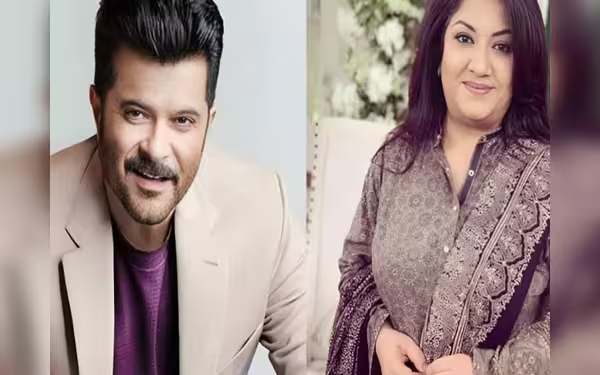Saturday, November 16, 2024 06:37 PM
Hina Dilpazir Reveals Anil Kapoor's Admiration for Her Role
- Hina Dilpazir shares Anil Kapoor's admiration.
- Bollywood opportunity hindered by political tensions.
- Television bridges cultural gaps between artists.
 Image Credits: tribune.com.pk
Image Credits: tribune.com.pkHina Dilpazir reveals Anil Kapoor's admiration for her role, highlighting cultural connections and challenges in Bollywood opportunities.
In the world of entertainment, connections often transcend borders, and this has been exemplified by the recent revelations of Pakistani actress Hina Dilpazir. Known for her remarkable performance in the popular television series "Qudoosi Sahab Ki Biwi," Hina has made a significant impact on audiences both in Pakistan and beyond. Her portrayal of relatable characters has not only won her accolades but also caught the attention of notable figures in the industry.
During a recent interview, Hina Dilpazir shared an intriguing story about Indian film star Anil Kapoor. She disclosed that after watching her acclaimed role in "Qudoosi Sahab Ki Biwi," Anil Kapoor reached out to express his admiration for her work. This revelation highlights the power of television in bridging cultural gaps and fostering appreciation among artists from different countries.
Moreover, Hina mentioned that she was approached for potential work in Bollywood, which is often seen as a dream opportunity for many actors in the region. However, she noted that the timing was unfortunate, as relations between Pakistan and India had become strained. This situation prevented any further discussions about her possible involvement in Bollywood projects.
The entertainment industry is often influenced by political climates, and Hina's experience serves as a reminder of how external factors can impact artistic collaborations. Despite the challenges, Hina Dilpazir's talent continues to shine, and her story is a testament to the resilience of artists who strive to connect with audiences across borders.
Hina Dilpazir's encounter with Anil Kapoor not only underscores the admiration that exists among artists but also reflects the complexities of cross-border collaborations in the entertainment industry. As viewers, we can appreciate the talent that transcends geographical boundaries and hope for a future where artists can freely collaborate, regardless of political tensions. Such connections enrich our cultural landscape and remind us of the universal language of art.













